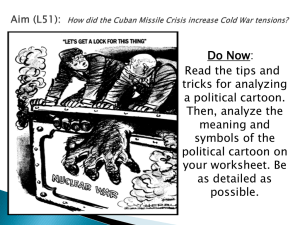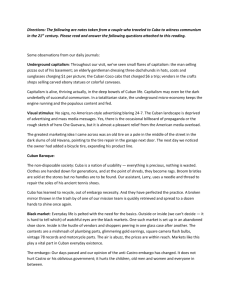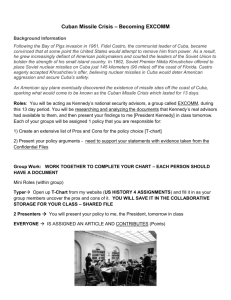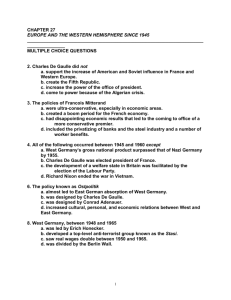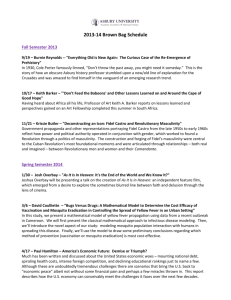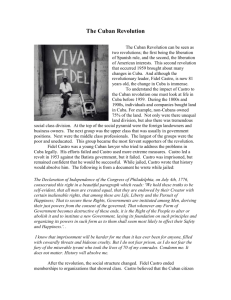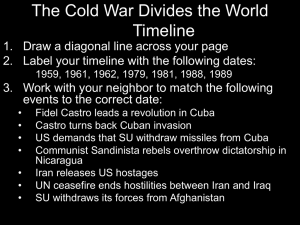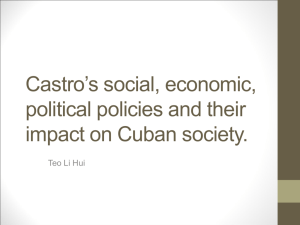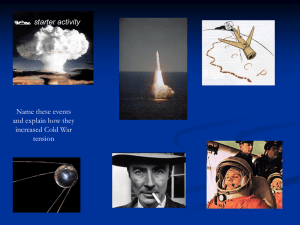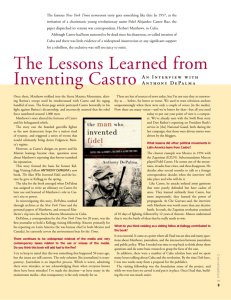US – Cuba relations - Harry S. Truman Library and Museum
advertisement
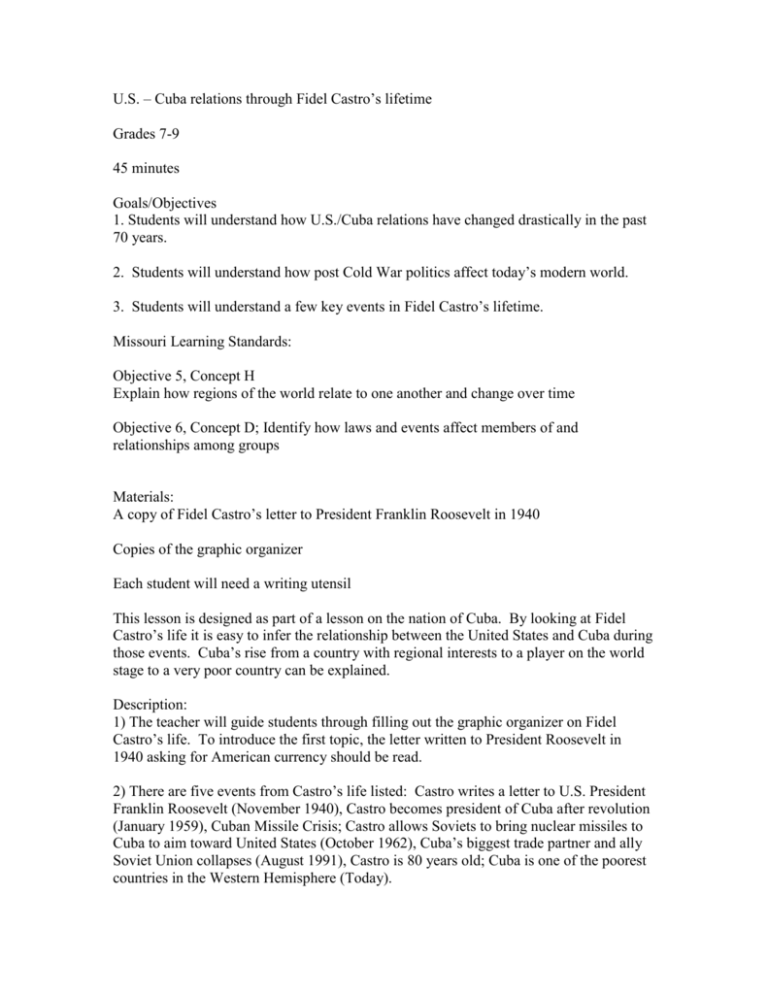
U.S. – Cuba relations through Fidel Castro’s lifetime Grades 7-9 45 minutes Goals/Objectives 1. Students will understand how U.S./Cuba relations have changed drastically in the past 70 years. 2. Students will understand how post Cold War politics affect today’s modern world. 3. Students will understand a few key events in Fidel Castro’s lifetime. Missouri Learning Standards: Objective 5, Concept H Explain how regions of the world relate to one another and change over time Objective 6, Concept D; Identify how laws and events affect members of and relationships among groups Materials: A copy of Fidel Castro’s letter to President Franklin Roosevelt in 1940 Copies of the graphic organizer Each student will need a writing utensil This lesson is designed as part of a lesson on the nation of Cuba. By looking at Fidel Castro’s life it is easy to infer the relationship between the United States and Cuba during those events. Cuba’s rise from a country with regional interests to a player on the world stage to a very poor country can be explained. Description: 1) The teacher will guide students through filling out the graphic organizer on Fidel Castro’s life. To introduce the first topic, the letter written to President Roosevelt in 1940 asking for American currency should be read. 2) There are five events from Castro’s life listed: Castro writes a letter to U.S. President Franklin Roosevelt (November 1940), Castro becomes president of Cuba after revolution (January 1959), Cuban Missile Crisis; Castro allows Soviets to bring nuclear missiles to Cuba to aim toward United States (October 1962), Cuba’s biggest trade partner and ally Soviet Union collapses (August 1991), Castro is 80 years old; Cuba is one of the poorest countries in the Western Hemisphere (Today). 3) As each event is being discussed, the teacher can tell what to write or guide students through the information that should be included in the other boxes. The other boxes ask for Cuba’s role in the world and its relationship with the United States. 4) Throughout the lesson, discussion is encouraged. Primary sources: A copy of a letter sent from a young Fidel Castro to President Franklin Roosevelt in November of 1940. In the letter, Castro asks for a $10 to add to his collection of foreign monies. Vocabulary List: Revolution, Cuban Missile Crisis Important People: Fidel Castro, President Franklin Roosevelt Additional activities: Lessons on the landscape, culture, and climate would be important to get a clearer picture of the nation of Cuba. Bibliography: “Give me a ten dollars bill”: Fidel Castro to President Franklin Roosevelt, November 6, 1940, copy distributed at Truman Presidential Museum Teacher Conference.
